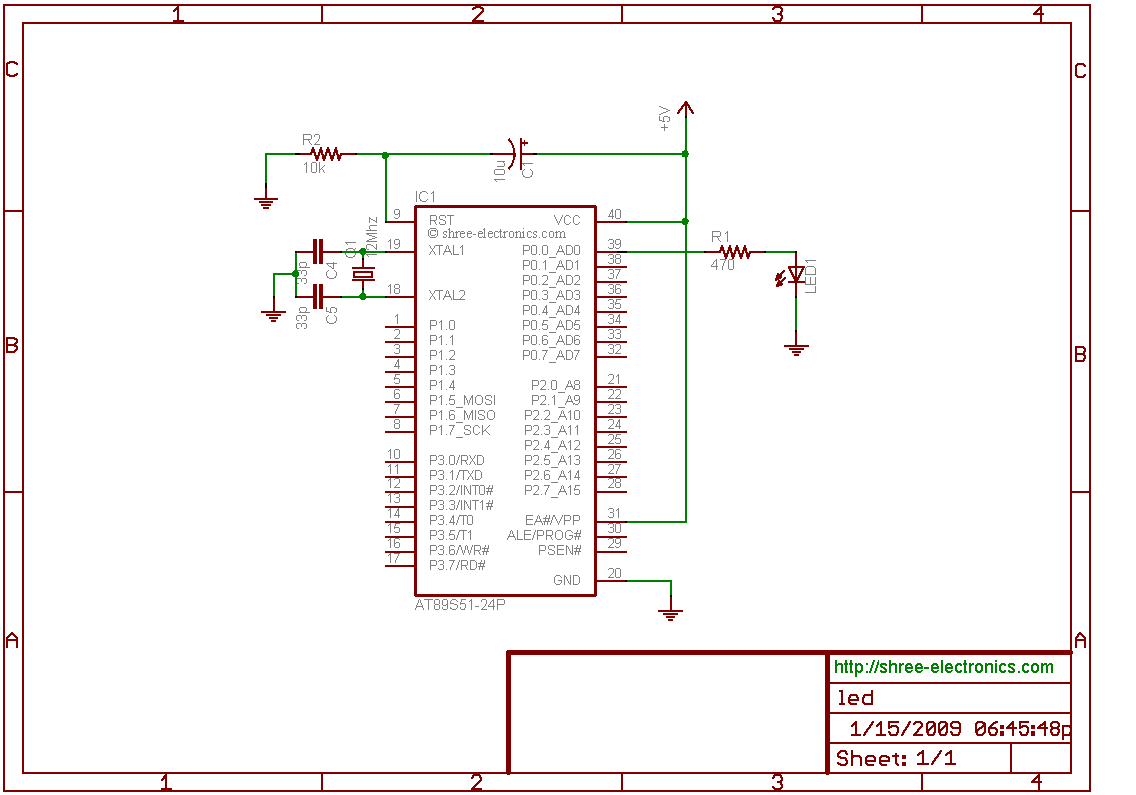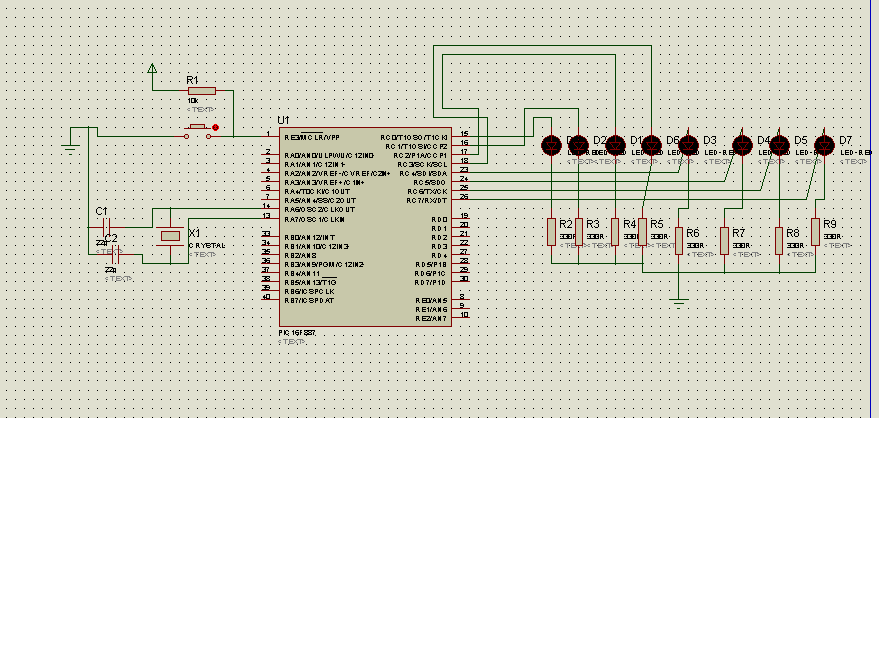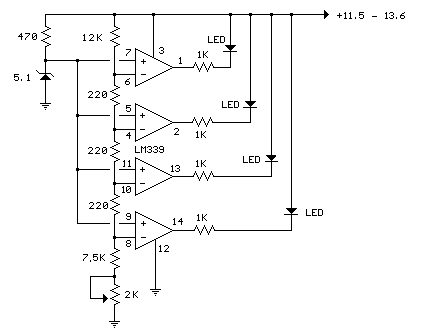
microcontroller led interfacing

The initial step often taken when learning about any microcontroller or embedded system is to make an LED blink. The circuit presented below illustrates the setup for interfacing an LED. Note: Due to the large dimensions of the circuit diagram, your browser may resize the image to fit the window. If using Internet Explorer, an expander tool may be required.
The circuit for interfacing an LED with a microcontroller typically involves a few essential components: the microcontroller itself, a resistor, and the LED. The microcontroller outputs a digital signal that can be used to control the LED. The LED is connected in series with a current-limiting resistor to prevent excessive current that could damage the LED.
In a standard configuration, the anode (longer lead) of the LED is connected to a digital output pin of the microcontroller, while the cathode (shorter lead) is connected to ground through the resistor. The value of the resistor can be calculated using Ohm's Law (V = IR), where V is the voltage drop across the resistor, I is the desired current through the LED, and R is the resistance. Typically, for a standard LED, a current of 20 mA is common, and the forward voltage drop of the LED is usually around 2V for red LEDs and 3V for blue and white LEDs.
When the microcontroller outputs a high signal (logic level '1'), current flows through the LED, causing it to illuminate. Conversely, when the output is low (logic level '0'), the LED turns off. This simple on-off control can be programmed in the microcontroller's firmware to create various blinking patterns, which serve as a fundamental exercise in understanding digital output operations.
This basic LED interfacing circuit serves as a foundational project for beginners in embedded systems, providing insights into digital control, component selection, and circuit design principles.The first thing usually done while learning any microcontroller or embedded system is blinking an LED. The circuit below shows the circuit for Interfacing an LED. note: Since the circuit diagram dimensions are big, your browser may fit the image to window size, if you are using Internet explorer, then an expander tool will be..
🔗 External reference
The circuit for interfacing an LED with a microcontroller typically involves a few essential components: the microcontroller itself, a resistor, and the LED. The microcontroller outputs a digital signal that can be used to control the LED. The LED is connected in series with a current-limiting resistor to prevent excessive current that could damage the LED.
In a standard configuration, the anode (longer lead) of the LED is connected to a digital output pin of the microcontroller, while the cathode (shorter lead) is connected to ground through the resistor. The value of the resistor can be calculated using Ohm's Law (V = IR), where V is the voltage drop across the resistor, I is the desired current through the LED, and R is the resistance. Typically, for a standard LED, a current of 20 mA is common, and the forward voltage drop of the LED is usually around 2V for red LEDs and 3V for blue and white LEDs.
When the microcontroller outputs a high signal (logic level '1'), current flows through the LED, causing it to illuminate. Conversely, when the output is low (logic level '0'), the LED turns off. This simple on-off control can be programmed in the microcontroller's firmware to create various blinking patterns, which serve as a fundamental exercise in understanding digital output operations.
This basic LED interfacing circuit serves as a foundational project for beginners in embedded systems, providing insights into digital control, component selection, and circuit design principles.The first thing usually done while learning any microcontroller or embedded system is blinking an LED. The circuit below shows the circuit for Interfacing an LED. note: Since the circuit diagram dimensions are big, your browser may fit the image to window size, if you are using Internet explorer, then an expander tool will be..
🔗 External reference





